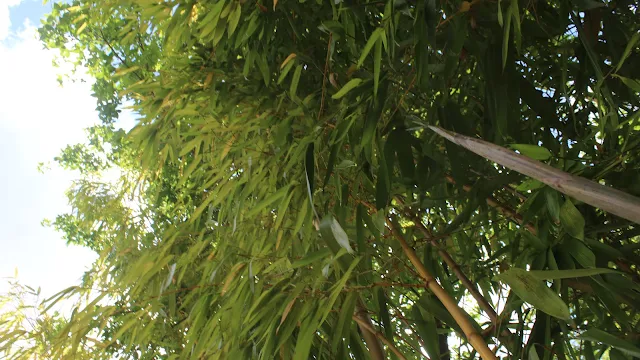Organic fertilizers help to keep the soil soft and feed the plants at the same time. They are best for bamboo plants.
They love the slow-release fertilizers, yet these plants will also benefit from the soluble quick-release fertilizers in spring when the new shoots are starting to come out.
5 organic fertilizers for bamboo plants
Here are some lawn fertilizers and multipurpose plant food with high nitrogen content that are great for reviving bamboo plants. Click on the links to check out the products.
Slow-release fertilizer high in nitrogen
- Miracle-Gro All Purpose (NPK 17-9-11) - A slow-release fertilizer suitable for garden plants and ornamental plants such as bamboo. Apply in spring and it will last till the next spring.
- Chempak Yearlong Fertilizer (15-6-2) - Apply this high nitrogen fertilizer once a year. Ideal for all trees, shrubs and evergreen plants like bamboo plants.
Soluble (quick-release fertilizers) high in nitrogen
- Miracle-Gro EverGreen (NPK 22-5-5) - ensure a steady supply of this fertilizer throughout the growing season, especially just before and after the new shoots have come out.
- Sportsmaster WSF Spring Summer (28-5-19) - An ideal fertilizer for pastures, contains a high nitrogen content which produces a fast initial effect.
How to identify a fertilizer for bamboo plants?
There are many fertilizers on the market today, but a good lawn or multipurpose garden fertilizer with high nitrogen content is a great option for bamboo plants.
Top tip: The nutrients in fertilizers are given in the ratio of Nitrogen (N) to Phosphorus (P) to Potassium (K), hence they are often called NPK fertilizers.
This makes it easy to identify the fertilizer that is high in nitrogen and can be seen clearly from the 4 fertilizers listed above.
Add organic compost, manure and mulch
Some popular choices for fertilising bamboo plants are natural compost, manure and organic mulch.
Add a good amount of compost or mulch early in spring just before the new shoots come out, or at the end of autumn to protect the new plants from winter's cold.
Check out this peat-free compost, ideal for strong root growth in your bamboo plants.
Video: The video below shows how a little bit of mulch can make the bamboo plants happy.
When to give bamboo plants some fertilizers?
You can use a fast-release liquid fertilizer when the bamboo shoots start developing in spring (March-April).
Also, slow-release fertilizer will do as well, but you should apply it earlier in February-March if you expect warm weather leading into spring and summer.




![Golden Yellow Stem Bamboo [Phyllostachys vivax f. aureocaulis] Golden Yellow Cane Bamboo](https://i0.wp.com/www.gardenbambooplants.com/wp-content/uploads/2021/10/golden-chinese-bamboo-vivax1-scaled.jpg?resize=1536%2C864&ssl=1)

